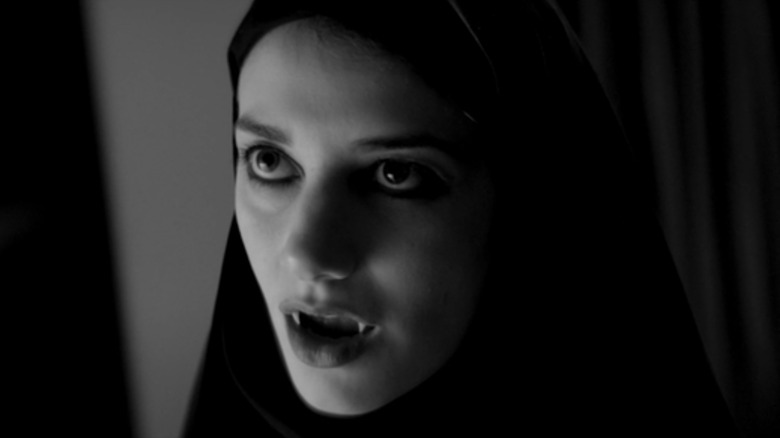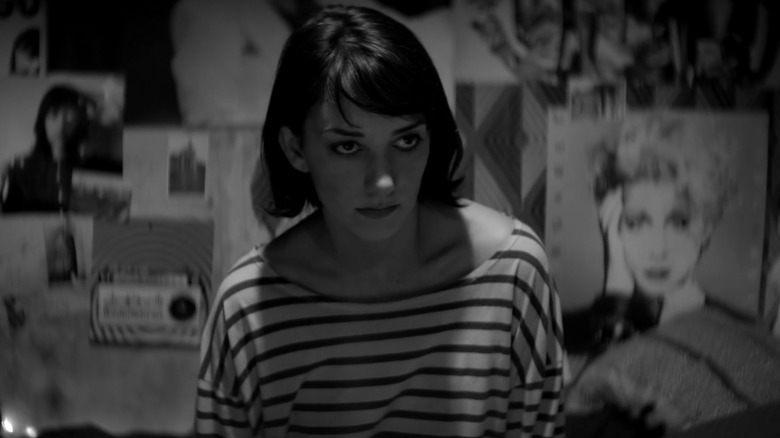The Inspiration Behind The Vampire In A Girl Walks Home Alone At Night
In the wake of its premiere at the 2014 Sundance Film Festival, Ana Lily Amirpour's "A Girl Walks Home Alone at Night" was often billed as an "Iranian vampire Western." That descriptor popped up in both the press and promotional materials like the official trailer for Amirpour's film, which marked her feature-length directorial debut. Vice Films, one of the distributors for "A Girl Walks Home Alone at Night," described the movie as "a joyful mash-up of genre, archetype, and iconography," with "prolific influences" that "span Spaghetti Westerns, graphic novels, horror films, and the Iranian New Wave."
At Sundance, Amirpour wore T-shirts signaling her appreciation of Quentin Tarantino's "Pulp Fiction" and David Lynch's "Wild at Heart." It's clear that she drew inspiration from numerous sources, but when Wired caught up with her at the festival, they asked her to pinpoint what most inspired her central vampire, the titular Girl, played by Sheila Vand.
Seeing the Girl in her black chador, a head garment worn by Muslim women, might lead some old-school genre fans to think she's a descendent of "Dracula's Daughter," another black-and-white vampire who appears in similar attire. However, Amirpour zeroed in on a more recent vampire queen as perhaps the biggest overriding influence on "A Girl Walks Home Alone at Night." She said:
"Anne Rice was my first thing. I loved — addicted loved — all of that. A vampire is so many things: serial killer, a romantic, a historian, a drug addict — they're sort of all these things in one."
Anne Rice was a starting point
Anne Rice authored dozens of novels, though her most famous book is undoubtedly "Interview with the Vampire" which was adapted into a 1994 film starring Brad Pitt and Tom Cruise as the vampires Louis and Lestat. "A Girl Walks Home Alone at Night" has a different texture than that movie, thanks in no small part to its Persian dialogue and its contemporary ghost-town setting in the Iranian desert — about as far removed from 18th-century Louisiana or 19th-century Paris as you can get.
As we peer into the Girl's inner sanctum and see her dancing sinuously, she could be any other material girl with Madonna (or Margaret Atwood) posters on her wall. Elsewhere in "A Girl Walks Home Alone at Night," we see another character, the mute drag queen, Rockabilly (Reza Sixo Safai), dancing with a balloon. As Amirpour observed:
"If there's one political thing [in the movie], it's not the chador. It's Rockabilly, because it's not OK to be gay in Iran."
In "Interview with the Vampire," Louis and Lestat effectively function as a same-sex vampire couple, complete with a surrogate daughter, Claudia (Kirsten Dunst). Rice's son, Christopher Rice, with whom she co-authored two books, identifies as gay. This is one element of Rice's work that might have influenced Amirpour. Though for her, Rice seems to have been more of a foundational influence that first ignited her love of vampires and impelled her toward her own unique vision of one years later.

